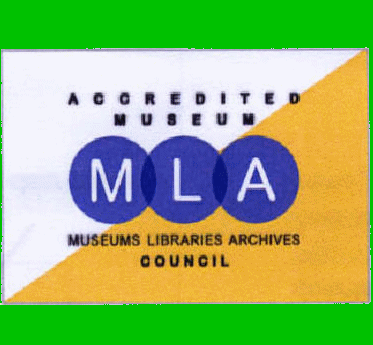Dates for your Diary
Saturday June 17th 10am – 5pm Aberfest
Museum opening times
The Museum is open to the public, free of charge:
Thursday* to Saturday 10am – 1pm
June 100 Club
This month’s prize numbers were drawn by member Susan Davies and the lucky winners are:-
No 3 Colin Price £20
No 10 Janice Bearcroft £10
If you would like to join our 100 club and be in with a chance of winning, it costs just £1 a month. Ask at the museum for further details.
Clytha Park Garden Open Day
Abergavenny NP7 9BW
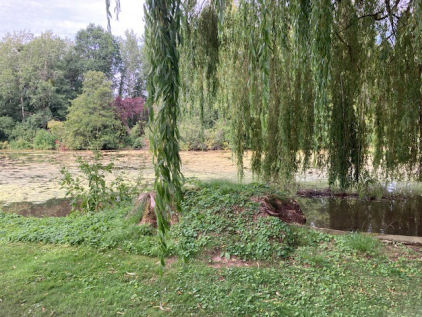 This year’s open garden day at Clytha Park (home to our President, Mr Jack Hanbury), will take place on Sunday 16th July 2023 and will run from 2pm to 5pm. As the event is taking place on the same day as the Wimbledon final, it will have a ‘tennis theme’. Amongst other things, this garden features a large pond surrounded by a winding grassy path as well as a kitchen garden which dates back to 1790. The garden is open as part of the National Garden Scheme, which gives visitors access to private gardens while raising money at the same time for nursing and health charities through the sale of admissions, teas, cakes and plants. Admission is £6 (Tomorrow’s tennis champions FREE!)
This year’s open garden day at Clytha Park (home to our President, Mr Jack Hanbury), will take place on Sunday 16th July 2023 and will run from 2pm to 5pm. As the event is taking place on the same day as the Wimbledon final, it will have a ‘tennis theme’. Amongst other things, this garden features a large pond surrounded by a winding grassy path as well as a kitchen garden which dates back to 1790. The garden is open as part of the National Garden Scheme, which gives visitors access to private gardens while raising money at the same time for nursing and health charities through the sale of admissions, teas, cakes and plants. Admission is £6 (Tomorrow’s tennis champions FREE!)
For more information click here.
The National Gardens Scheme: registered charity no 1112664
Can You Help Us?
The museum has a short survey which we would be grateful if readers could complete. This survey will help us in our quest to retain our accreditation, without which we would have no access to funding and would be forced to close. So we would be very grateful if as many readers as possible would use the link below to complete the survey that should take no more than 5 minutes. The survey is available through this link
Alternatively, please call in and complete a hard copy version in person. Thank you in anticipation.
The National Memorial Arboretum
The local branch of the British Legion recently organised a coach trip to the National Memorial Arboretum and I was lucky enough to get a ticket as it is somewhere that is well worth a visit. I have visited before but the place is huge and so there is always something new to see as well as favourites to revisit. When you think of an arboretum you think of trees but this arboretum is very different, very special.
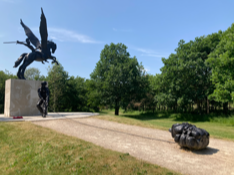 The idea, first thought of in 1988, was to establish a national centre for Remembrance to those that died after giving to their community or country and work eventually commenced at this 150 acre site in 1994. It occupies an area of old gravel workings on the edge of a section of the National Forest just outside Lichfield. The arboretum contains more than 25,000 trees and over 400 memorials.
The idea, first thought of in 1988, was to establish a national centre for Remembrance to those that died after giving to their community or country and work eventually commenced at this 150 acre site in 1994. It occupies an area of old gravel workings on the edge of a section of the National Forest just outside Lichfield. The arboretum contains more than 25,000 trees and over 400 memorials.
At the heart of the Arboretum is the Armed Forces Memorial which is a tribute to over 16,000 service personnel who died in combat, training or due to terrorism since the Second World War – the name of each person is inscribed on the walls of this memorial according to the date they died. It is a very sobering experience to stand there, particularly so to see a name that you know.
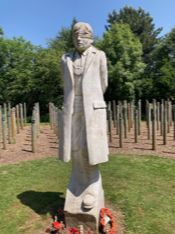 The memorials vary in size from a simple plinth to more elaborate structures, all in beautifully landscaped grounds. Other than the main memorial, by far the most poignant is the 'Shot at Dawn,' memorial. In a secluded part of the site, surrounded by trees, over 300 posts have been erected, each one bearing the name of someone shot in the First World War for desertion. They were all young, all lowly soldiers.
The memorials vary in size from a simple plinth to more elaborate structures, all in beautifully landscaped grounds. Other than the main memorial, by far the most poignant is the 'Shot at Dawn,' memorial. In a secluded part of the site, surrounded by trees, over 300 posts have been erected, each one bearing the name of someone shot in the First World War for desertion. They were all young, all lowly soldiers.
Centre stage in this memorial is a statue of a blindfolded boy – this young man, just 17, was the youngest soldier shot in this way. One man visiting was in tears and it is certainly hard to stay dry-eyed.
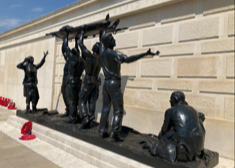 Nonetheless, it's not a gloomy place to visit – the memorials are there to ensure we remember but also to appreciate how many organisations play their part whenever there is a conflict.
Nonetheless, it's not a gloomy place to visit – the memorials are there to ensure we remember but also to appreciate how many organisations play their part whenever there is a conflict.
Our trip included a couple of hours in Lichfield itself – an interesting market town with an impressive cathedral which, unusually, has three spires. Back on Henley's coach, setting off for home in the early evening, everyone agreed that it had been a really good day.
Jen Price
Restoration of Ceramic Dish
Every few years the museum has an inspection by a Conservator to check on the state of our artefacts. One such inspection occurred in 2012 and a large dish was found in our archive that was broken. The dish had been with us since before 1997 and we had no details of whence it came or what state it was in on arrival, however we believe it had probably been broken and repaired prior to its deposit with the museum and now that repair had failed.
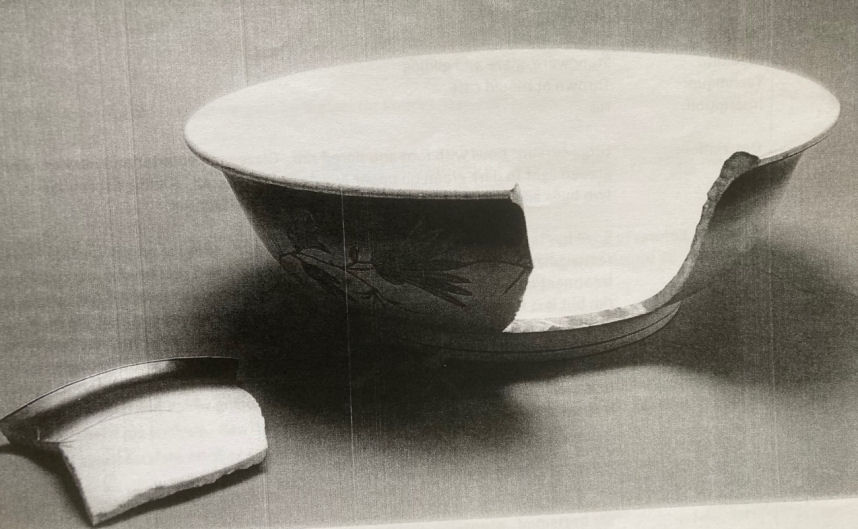
The Conservator, Jane Henderson, suggested the broken dish would be a perfect project for a trainee Conservator and so in early October 2012 the dish was duly sent to Cardiff University. There it was given to trainee, Nerys Rudder, whose first job would be to remove all traces of the adhesive that had been used on it. But before she could do that she first had to identify what adhesive had been used. At the risk of over-simplifying, this involved scraping off a sample and analysing it with infrared spectrometry. This confirmed it to be cyanoacrylate or to you and I, superglue!
Now that the adhesive had been identified, using the appropriate solvents, Nerys began the pain-staking job of removing the superglue, from both the dish itself and the broken piece, in an operation not akin to what you might see on the BBC’s The Repair Shop! As with most projects, the preparation is what takes the most time and the removal of the superglue took many months to achieve. Eventually all traces of the superglue were gone and now, and only now, could Nerys begin to restore the bowl to its former glory. I won’t bore you with the all the details but I have in front of me a 10 page report detailing every step of the process which took around a year to complete!
In May this year Jane Henderson, Professor of Conservation at Cardiff University and fellow conservator, Phil Parkes, very kindly returned the dish to us and it is now on display. Take a look on your next visit and see if you can spot the join!
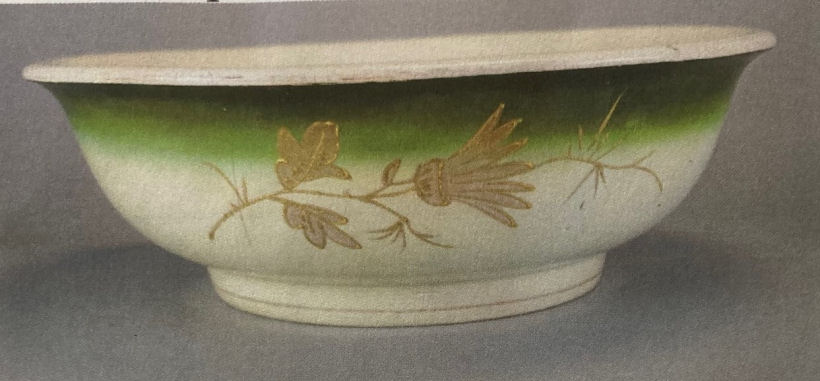
 Many thanks to Jane, Phil and a special thank you to Nerys for her pain-staking repair work. I would also like to take this opportunity to thank Phil who is an ICON accredited objects conservator with a special interest in arms and armour for visiting the museum for Aberfest and demonstrating his skill in the making of ‘chain-maille’ armour.
Many thanks to Jane, Phil and a special thank you to Nerys for her pain-staking repair work. I would also like to take this opportunity to thank Phil who is an ICON accredited objects conservator with a special interest in arms and armour for visiting the museum for Aberfest and demonstrating his skill in the making of ‘chain-maille’ armour.
Right is our museum Treasurer, Mrs Karen Pratley, wearing one of Phil’s creations.
Weathercocks
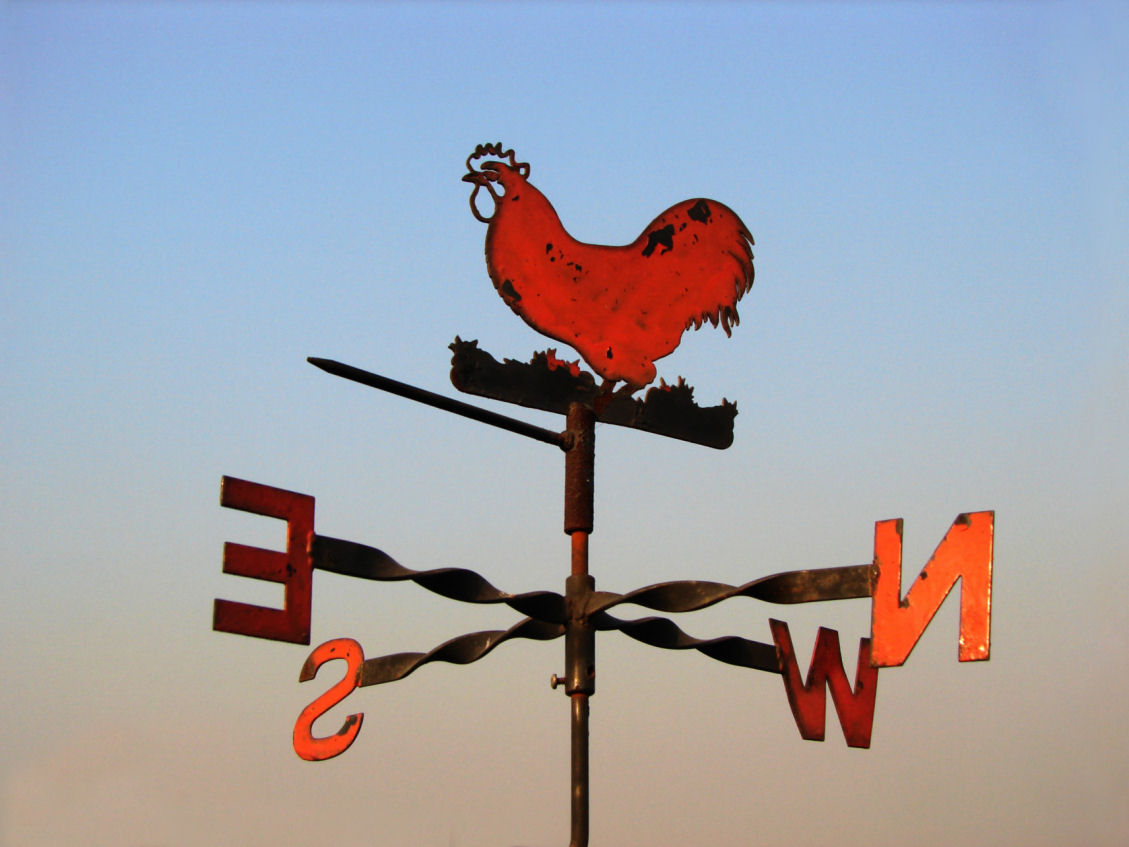
By Nevit Dilmen - Own work, CC BY-SA 3.0
We are all familiar with weather vanes but have you ever wondered why so many of them have a cockerel – the ‘weathercock’? Having done a bit of googling it seems that weather vanes have been around since the time of the ancient Greeks and also in ancient days in China, but not necessarily the weathercock.
Pope Gregory apparently said that the cockerel, being the emblem of St Peter, was a good emblem of Christianity and as a consequence, the cockerel gradually began to appear on church steeples. This practice accelerated when, in the 9th century, Pope Nicholas ordered that the figure of a cockerel was to be erected on every church steeple. In Britain, the oldest weathercock (as far as reliably documented) was erected on the tower of Winchester cathedral, sometime in the 10th century, but there are tales of earlier such weathervanes. The oldest surviving weathercock is the one on the top of the church at Ottery St Mary in Devon – that was put there in about 1340. I visited Ottery St Mary a couple of years ago; I wish I had known then that I was looking at such a notable feature.
Although weather vanes now come in all shapes and figures, the cockerel remains a favourite and some of you may have seen an episode of ‘The Repair Shop’ which included the restoration of a weathercock. There must be a weathercock somewhere not too far from Abertillery? If anyone knows where, do get in touch and if you can send us a photo of it!
Jen Price
Bryn Seion Church Oregon USA
Bryn Seion Church in Oregon, was built in 1884 by a small group of Welsh people and due to the decline of Christianity it is now under threat. You might be wondering what interest does this hold for this newsletter? Well one woman who is trying to save the church and who has been a member since 1969, is Betty Pierce who is 100 years old this month. And Betty, moved to America in 1947 from…Abertillery!
Read Betty’s story here

Top Of Page
© Abertillery & District Museum 2023 